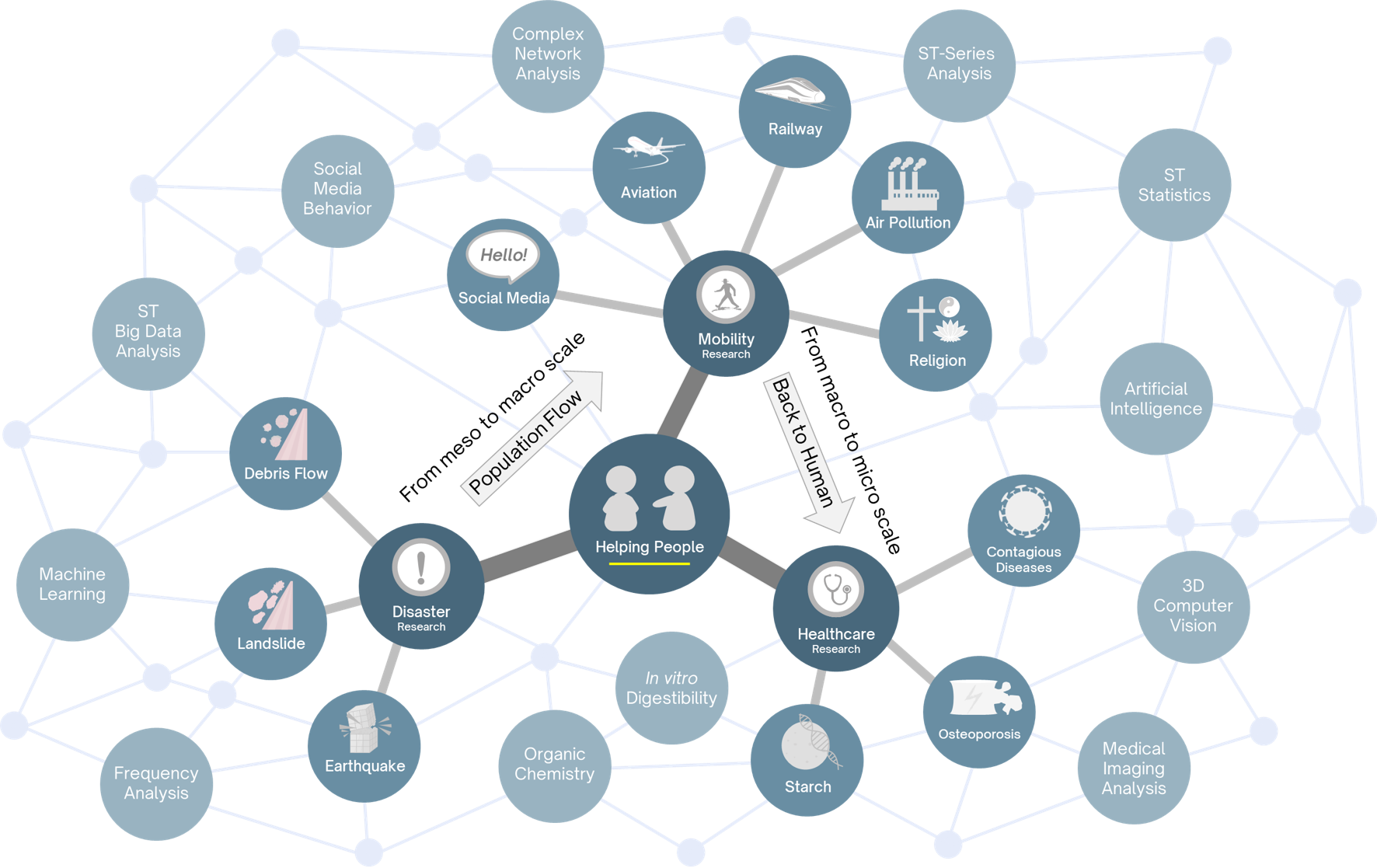Research Interests
My research philosophy is “helping people” along my 10+ academic career years from various perspectives.

The first research direction was disaster prevention from undergraduate project to master thesis. Several spatiotemporal big data analyses, frequency analysis, and machine learning were conducted to establish the early-warning threshold or reveal precursors for disaster prevention, e.g., debris flow, landslides, and earthquakes.
Later, I found that the key to financial loss or deaths caused by a natural disaster is population flow, i.e., urban expansion. Therefore, the second research direction concentrated on human mobility, but not limited to the physical dimension. I started with air transportation to identify each airline alliance's market regions from complex network analysis. We first adopted the airport community concept to quantify the collaborative relationship within an airline alliance, the dominant and competitive routes between airline alliances in number and spatial dimension.
In 2020, we were suffered from one of the most severe pandemics – COVID-19; as a spatial data scientist, leveraging the human mobility pattern to estimate the disease transmission was beneficial for searching best disease prevention policies after large-scale infections. We proffered the explanation why the neighboring provinces of Hubei had a higher number of new confirmed cases than other provinces – transferring activities. In 2021, most countries dynamically adjusted the travel restriction policy, and air passengers increased compared to 2020. As the major pathway of international disease transmission, the exposure risk estimation for air travel is crucial to passengers during route planning or flight schedule selection; however, no mobile app or platform could provide timely and personalized exposure risk estimation for air travelers. We developed a mobile app combining airport catchment area, flight frequency, and timely estimation to meet passenger demands and WHO mHealth and uHealth concerns during the COVID-19 pandemic. Three side research projects were moved from physical space to abstract space, i.e., geographic diffusion impact of cultivation in religious development, causal relationship from stationary emission sources to ambient air quality, and COVID-19 impact on social media behavior.
After a series of contagious disease research and air pollution studies, the third research direction is healthcare, based on short- or long-term human mobility changes, and this might cause some healthcare problems. To strengthen the medical knowledge that could better the understanding of body mechanics, I am currently a postdoctoral researcher @ department of radiology, school of medicine, college of medicine, Taipei Medical University. Diagnosis is one of the most important roles in radiology, requiring vital medical knowledge and clinical practice experience. Hence, I believe that I could acquire a solid medical domain and realize the clinical dilemma.
Osteoporosis is a common disease in older people with a low detection rate because the majority are asymptomatic, and radiologists are often neglected. There are three major problems in clinical practice: (1) report generation processing is high human-intensity work; (2) deformity measurement method in three-dimensional medical images has not been well established; (3) trabecular bone loss mechanism is unclear. We developed a BatchBMD automated report generation system with 100% accuracy and the fastest report speed, and this work has been published in the Diagnostics (SCI) journal. The second and third works are in progress.